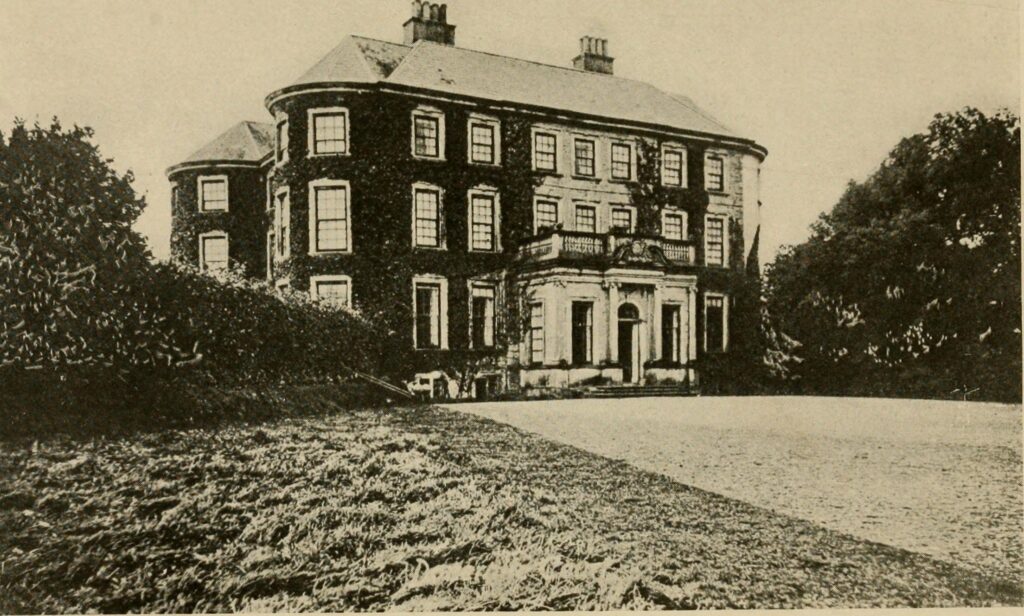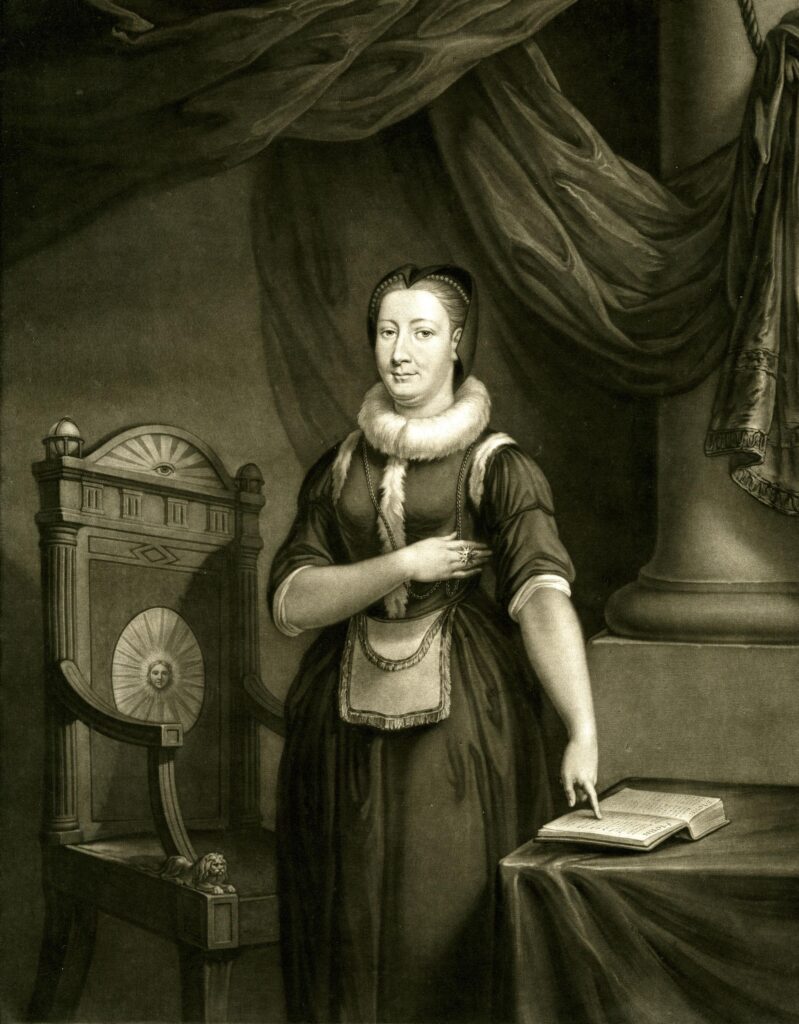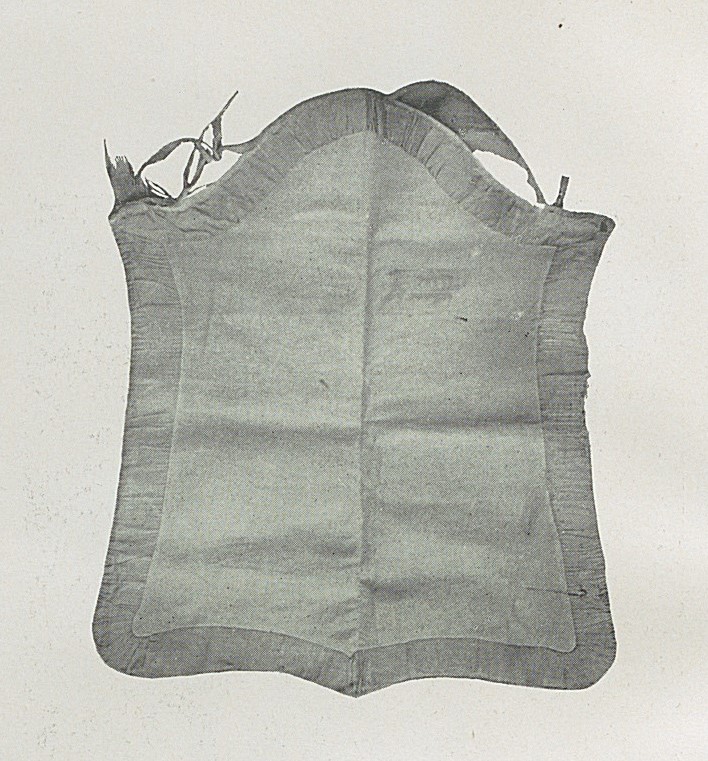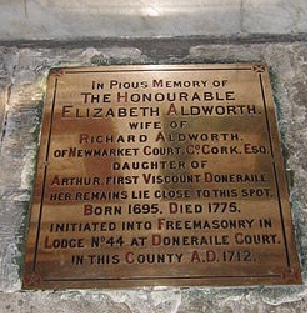HI6091: Elizabeth Aldworth, The Lady Freemason – Online Work Placement in Special Collections (2020)
- Elaine Harrington
- January 29, 2021
The River-side welcomes the final post in this online work placement series in the second of two guest posts from Patrick McKee. Patrick was a student on the 2019/2020 MA in Medieval History in UCC, that includes the HI6091: Skills for Medieval Historians module. Patrick spent three weeks researching Elizabeth Aldworth and early 19th century prints. His previous post in the series was “Tom and Jerry Prints – Not the Cat and Mouse Team.” In addition, he wrote the blog post “A Safe Harbour for Ships”, part of The Mapping Cork: Trade, Culture and Politics in Late Medieval and Early Modern Ireland student exhibition hosted on The River-side.
The Honourable Elizabeth Aldworth (née St Leger) The Lady Freemason: A Late Seventeenth Century Strike for the Feminist Cause
The tranquil setting of 17th century Doneraile, Co. Cork is an unlikely setting to strike a blow for the feminist cause. Moreover, the even more unlikely female scion of Irish nobility would [by default] strike the blow. Sometime between the years 1693-1695 a daughter was born at Doneraile Court Co. Cork to Arthur St.Leger, Baron Kilmayden and 1st Viscount Doneraile, and his wife Elizabeth (nee Hayes). The little girl would make Masonic history: as the only woman ever initiated into the Ancient Order of Free and Accepted Masons. In a time of patriarchal absolutism, a girl would become a member of what became the oldest and largest fraternal organisation in the world.

Arthur St. Leger was a member of the Irish House of Lords, raised to the peerage in 1703. St. Leger: his sons Arthur, John and Hayes were ardent Freemasons and occasionally a private Lodge was opened at Doneraile Court. This was in a time before Freemasonry came under the jurisdiction of the Grand Lodges; England 1717, Ireland 1725 and Scotland 1736. It was at one of these occasions that Elizabeth St.Leger would become witness to the conferring of a Masonic Degree of the Fellowcraft and by accident, be initiated into the Masonic Order.

Elizabeth’s Life
Events surrounding Elizabeth’s early life are unknown. However, nearly a century before Mary Wollstonecraft wrote her work A Vindication of the Rights of Women, (1792) Elizabeth would enter a world exclusively the domain of men. Seventeenth century Ireland was an era of turmoil. The Williamite Wars had started in 1689 and in 1690 the Wild Geese with the Jacobite Army fled the country. By 1695 the introduction of the Anti-Catholic Penal Laws would sink Ireland deeper into poverty for years to come. Male authority descended from the father, to the brothers and then through marriage to a husband. Women were expected to know and keep their place.
On the 17th April 1713, Elizabeth married Richard Aldworth Esquire of Newmarket Court, Co. Cork. The pair would spend sixty years together and produce two sons. Sources do not exist of the domestic life of Mrs Aldworth but the Memoir of 1811 has a testament to her masonic membership:
“she lived up to the highest principles of the [Masonic] Order to which she belonged. The lady was possessed of considerable wealth, her purse and influence were always at the command of any Brother in distress and to all appeals she responded with ready sympathy and large-hearted generosity. She was a most exemplary mason and headed her Lodge frequently in procession. The lady had such a veneration for Masonry that she would never suffer it to be lightly spoken of in her presence. Thus lived this pattern of female excellence, dispensing, like a principle of good, comfort and happiness to all about her.”
quot. in Memoir of the honble. Elizabeth Aldworth of Newmarket Court, Co. Cork.
The line of the Viscounts Doneraile would continue through Mrs Aldworth’s second son St. Leger, until the male line became extinct in 1956 upon the death of the 7th Viscount. The House of Lords decided against offering the title and inheritance to Mr Dick St. Leger, an American cousin. Lady Doneraile continued to live at Doneraile Court until 1969 when she sold the estate to the Land Commission. In 1994 the Irish Georgian Society handed the house over to the Office of Public Works, who now run it and the park.
Elizabeth & Freemasonry Initiation
Of course, much conjecture surrounds the events leading to Elizabeth’s initiation, however Brother John Day in his memoir, stated that the legend of Elizabeth hidden in a clock should be dismissed. It is almost certain that Elizabeth was initiated into Freemasonry, some time in the years 1710 to 1712, when she was between 17 and 19 years old. Her story of initiation is an interesting one and is worth retelling. The incident proves that Freemasonry was being practiced in Ireland many years before the first recorded meeting of the Grand Lodge of Ireland.

In the days before Grand, Provincial and District lodges were instituted, Brethren would meet in Inns or private homes. On one such occasion at Doneraile Court, Viscount Doneraile opened Lodge next to a room known as the library. Unknown to the assembled Lodge, Elizabeth was in the library, a room next door to the Lodge Room. Structural work was in progress at the time and part of the separating wall was being removed. Elizabeth was fully aware that her father’s Lodge was held at the house; she had no knowledge of the meeting taking place on that occasion. Looking through an opening in the structural work, she saw and heard the proceedings of the Lodge. The young girl knew her only route out was through the Lodge Room. Attempting to exit she was confronted by The Tyler [her father’s butler] guarding the Lodge with a drawn sword. Elizabeth’s scream of alarm alerted the Lodge and Brethren. The Tyler posed no danger to the young girl, as his function was a ceremonial one. However, this posed a problem for the assembly. What course of action would they pursue? Elizabeth had witnessed and heard everything. This was a fraternal society with secrets, and female membership would have been held preposterous. Moreover, she had witnessed the conferring of a Fellowcraft Degree on a male member. According to Brother Edward Conder’s account The Hon. Miss St.Leger and Freemasonry (1895), the Tyler summoned the Brethren [including her father] and after a long discussion; Elizabeth was acquainted with the grave responsibilities she had unwittingly taken upon herself. Only one course was open to them. The young woman displaying a high sense of honour, at once consented to pass through the ceremonial that she already in part, witnessed.
Since this was in the days before properly constituted Grand or Provincial Lodges, it cannot be ascertained with any certainty which Lodge could be her “Mother Lodge.” Unlike the Blue or Craft Lodges of today which encompass three degrees, Entered Apprentice, Fellowcraft and Master Mason; the Craft of Miss St. Leger’s time worked only two; Entered Apprentice and Fellowcraft. In Masonic instruction each degree has its own tracing board. This one is the Fellowcraft Board showing the entrance to King Solomon’s Temple, the pillars, Boaz and Jachin, the all-seeing eye and the masonic tools of the square, compass and level.

Elizabeth’s Death
According to the Limerick Chronicle dated 18th May 1772, Mrs Aldworth’s death is recorded as occurring on 11th May 1772, in her eightieth year. She was laid to rest in the Davies family vault, in the crypt of St. Fin Barres Cathedral Cork. However, this would not be the last we would hear of the Lady Freemason.

Almost a century after her death in 1870, the new Cathedral of St. Fin Barre was consecrated. The eminent antiquarian Dr Richard Caulfield during the demolition of the old church had an opportunity to examine the vault. Elizabeth’s coffin had been disturbed and Dr Caulfield described what he found in his Annals of St Fin Barre’s Cathedral, Cork:
“She was in a leaden shell and in a wonderful state of preservation. She was attired in a dark silk dress, white satin shoes and silk stockings of similar colour. Her person was comely: her face of a dusky or ash colour: her features quite perfect and calm. She had long silk gloves, which extended above the embroidered lace wrist bands: her bosom was full and large for her age: she wore a white head-dress with a full frill round her neck the plaits of which were not even ruffled.”
Annals of St. Fin Barre’s Cathedral, Cork, p.83.
Remembering the Lady Freemason
Regular Freemasonry as it is known today was unified with the United Grand Lodge of England in 1717, by 1736 Ireland and Scotland had followed. This was in a time when; not only could women not vote, but could not own property, in fact a woman stood for very little. Like in an absolute monarchy the woman was tied to her father or husband, the law came firmly down on the male side. Elizabeth Aldworth in the years before masonic constitutions, exploded the myth that only men can be made Masons. Worldwide Freemasonry for women is today a fact of life, and female masonic rites and constitutions flourish on every continent. Regular Freemasonry remains exclusive to men as it is believed that to admit female members would violate the ancient Landmarks. The time has come to remember the principles that Mrs Aldworth stood for in veneration of the highest human qualities.

Further Reading
Caulfield, Richard, Annals of St. Fin Barre’s cathedral, Cork / compiled from records in The British Museum … and other authentic sources, (Cork, 1871).
Day, John. Memoir of the honble. Elizabeth Aldworth of Newmarket Court, Co. Cork: who was initiated into the ancient order of Freemasonry at Doneraile Court, Co. Cork, (Cork, 1914).
Day, John. Memoir of the honourable Eliz. Aldworth, the lady freemason / edited, with a preface by David J. Butler, (Sixmilebridge, 2019).
